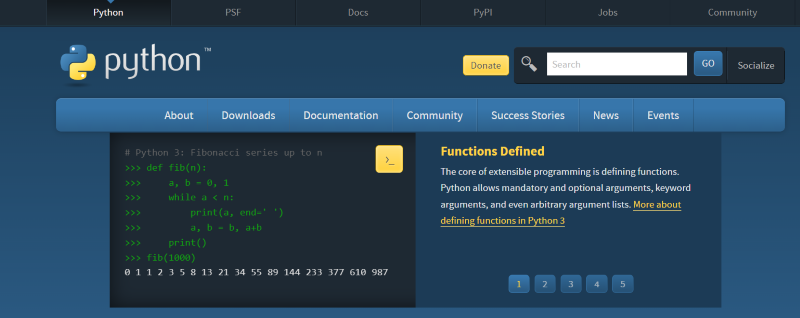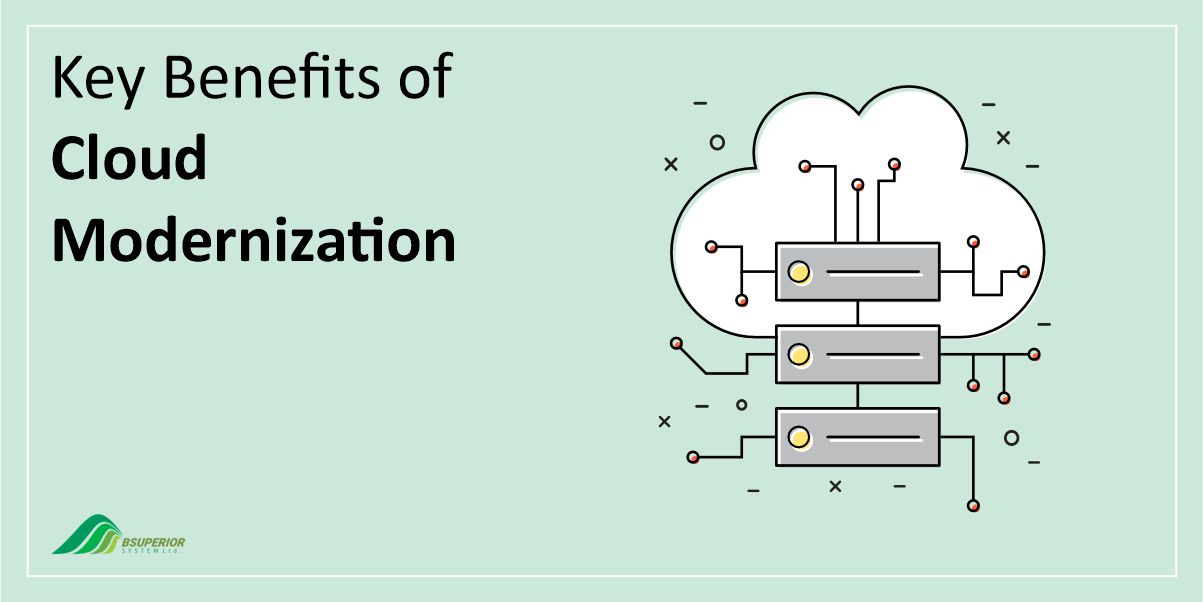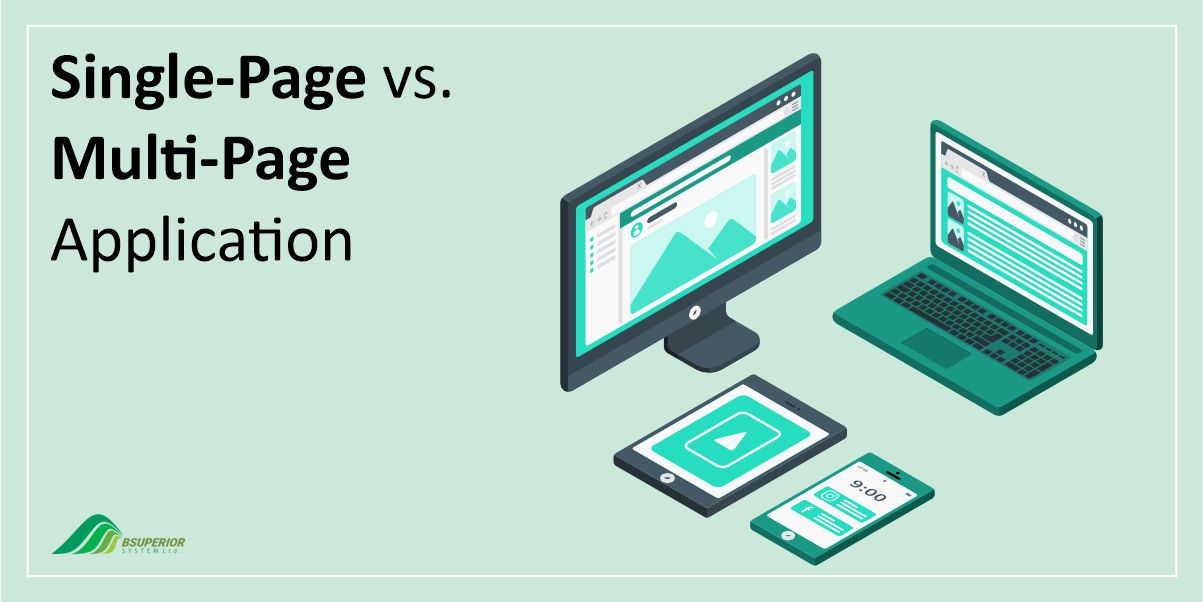Best Programming Language for Microservices in 2023

Table Of Content
Unsure which programming language to choose for your microservices project? This blog post dives into the top 5 options (Java, Node.js, Python, Go, and .NET) to help you pick the right tool for the job. We explore the strengths of each language for microservices development and the factors to consider when making your decision.
Highlights
- Microservice is a software development approach that enables developers to break down applications into smaller components.
- When choosing a programming language for microservices, you should consider a number of factors, including automation, perceivability, and component decoupling.
- Java, Python, Node.js, Go, and .NET are among the best languages for microservice development.
What is Microservices Architecture?
Microservice architecture is an innovative software development approach that involves breaking down applications into smaller, modular components.
This approach is gaining prominence and replacing the older and heavier monolithic architecture commonly used in complex applications.
The main goal of microservice architecture is to simplify the deployment process by creating applications that are well-suited for cloud environments.
This architectural style also incorporates various programming languages and uses diverse data storage techniques to enhance flexibility and scalability. Read More: TOP BACKEND LANGUAGES FOR WEB DEVELOPMENT [2023 GUIDE]
Pros
Microservices offer several benefits over traditional monolithic architectures, including:
- Enhanced Fault Isolation: The failure of a single module has minimal impact on larger applications.
- Avoidance of Vendor or Technology Lock-in: Microservices allow for the flexibility to experiment with a new technology stack on a specific service as needed. This reduces dependency issues and makes it easier to roll back changes. With less code involved, there is increased flexibility.
- Simplicity: The functionality of a service is easier for developers to understand due to the simplicity of microservices.
- Quicker and Smaller Deployments: Reduced codebases and scope lead to faster deployments, enabling the exploration of Continuous Deployment benefits.
- Scalability: As services are separate, it’s easier to scale the most needed ones at the right times, rather than scaling the entire application. This can lead to cost savings when implemented correctly.
Cons
Microservices architecture is a popular choice for developing software applications, but it does have some drawbacks.
- Complex Communication: Microservices involve numerous independent services, making it essential to manage communication between them meticulously. Developers may need to write extra code to handle these interactions, and over time, issues like latency in remote calls can become complex.
- Resource Intensive: The more services you have, the more resources you need. This includes managing multiple databases and transaction processes, which can be cumbersome.
- Testing Complexity: Testing a microservices-based application can be challenging. Unlike a monolithic approach where you can launch a single application on a server, microservices require each dependent service to be confirmed before testing can start.
- Debugging Challenges: Each service in a microservices architecture generates its own set of logs, making debugging more complex with multiple logs to review.
- Suitability for Company Size: Microservices are well-suited for large companies but can be slower to implement and overly complicated for smaller companies that prioritize rapid development without getting entangled in complex orchestration.
Factors to Consider When Choosing a Language for Microservices
One of the advantages of microservices is that you can use different programming languages for different services.
This can be helpful if you have developers who are more familiar with certain languages, or if you need to use a language that is specifically designed for a particular task.
However, using multiple programming languages can also add complexity and overhead to the development process. This is why it is important to carefully evaluate the programming languages you choose for your microservices architecture.
Before choosing a programming language for microservices, you should consider the following factors:
- Perceivability: The language should be easy to understand and learn.
- Automation: The language should support automation so that you can easily build and deploy microservices.
- Customer-Centric: The language should be designed with the customer in mind. This means that it should be easy to use and that it should be able to meet the needs of the customers.
- Domain-Driven: The language should be designed to be used in the business domain so that it is easy to model the application’s business logic.
- Independent Deployment: The language should support independent deployment so that you can deploy microservices independently of each other.
- Component Decoupling: The language should support component decoupling to help you easily replace or update individual components.
- Continuous Integration: The language needs to support continuous integration so that you can automatically build and test microservices as they are developed.
5 Best Languages for Microservices
Microservices can be created with a wide range of languages. Let’s take a closer look at some of the best languages that support microservices. These are:
- Java
- Node.js
- Python
- Go
- .NET
1 – Java

Java is a powerful and versatile programming language that is used in a wide variety of applications. It is a good choice for software, web, and mobile application development, as well as big data analytics and server-side technology.
Features
- Simple: Java is a simple programming language that is easy to understand and learn.
- Object-Oriented: Java is an object-oriented programming language, which means that everything in Java is an object.
- Platform-Independent: Java is designed to function on any platform, regardless of the operating system and hardware technology.
- Interpreted: Java code is interpreted by the JVM, which means that it is not converted into machine code until it is executed. This makes Java programs slower than compiled languages, but it also makes them more portable and secure.
- Robust: Java is a robust language that is designed to handle errors and exceptions gracefully. This makes it a good choice for developing reliable applications.
- Secure: Java is a secure language that has built-in security features to protect against viruses, tampering, and other security threats.
Why Java is best for microservices?
The simplicity of annotation syntax is what makes Java an excellent choice for building microservices. This feature, especially when combined with Microservices frameworks, simplifies the development of Java Microservices.
It enhances readability, which is particularly beneficial when dealing with complex systems. Java also provides numerous options to aid in the creation and deployment of Java Microservices.
2 – Node.js

Node.js is a powerful and versatile JavaScript runtime environment that can be used to develop a wide variety of web applications and other real-time applications.
Features
- Written in JavaScript: Since Many programmers are already well-versed in JavaScript, learning Node.js a relatively straightforward process.
- Asynchronous Nature: One of Node.js’s key features is its asynchronous nature. This means that a Node.js server doesn’t have to wait for data from an API; it can continue processing other tasks concurrently.
- Event-Driven Architecture: This means that once a task is finished, a subsequent action is triggered. In Node.js, when an event is either initiated or completed, it triggers the execution of a callback function. Callback functions demand fewer server-side resources and occupy less memory.
- Scalability: Node.js effectively manages concurrent requests while distributing the workload across all available CPU cores. This scalability feature makes Node.js a preferred choice for developers.
- Multiple Platform Compatibility: Node.js can be employed on a broad range of systems, from Windows and macOS to Linux and even mobile platforms.
Why Node.js is Best for Microservices?
Node.js is a good choice for businesses and organizations that are looking to implement microservices.
Node.js is a good choice for microservices for several reasons, such as:
- Being Fast: Node.js is event-driven, which makes it very efficient for handling concurrent requests.
- Scalablability: Node.js can be scaled horizontally to handle increased traffic.
- Flexiblity: Node.js is a versatile platform that can be used to develop a wide variety of applications.
- Popularity: There is a large and active community of Node.js developers, which means that there is a lot of support available.
3 – Python

Python is a popular programming language that is open-source, free to use, and has a wide range of features that make it easy to customize. It is also a good choice for beginners because it is easy to learn and use.
Features
- Free and Open-Source: Python is entirely free to use, even for commercial purposes. You can download Python without any cost from the official Python website, modify it, and distribute it as needed.
- Rich Standard Library: Python offers a comprehensive standard library. It includes libraries for image manipulation, database interaction, unit testing, regular expressions, and more.
- Interpreted: Python is an interpreted language, which means that the source code is executed line by line rather than requiring compilation before running.
- Portability: Python code is portable, allowing it to run on different operating systems without modification. Code written on one platform, such as a Mac, can seamlessly run on Windows or Linux.
Why Python is best for microservices?
Python is a good choice for developing microservices applications. Here are some of the reasons why Python is a good choice for microservices:
- Versatile: Python is a versatile language that can be used for a wide variety of tasks, including microservices.
- Well-Suited for Microservices: Python is well-suited for building microservices due to its simple syntax and powerful libraries. Its libraries make it easy to perform tasks such as data manipulation, web development, and machine learning.
- Cross-Platform: Python can run on multiple platforms, making it a good choice for cross-platform development. This means that you can develop your microservices application on one platform and deploy it to another platform without having to make any major changes.
- Asynchronous Programming: Python supports asynchronous programming, which is a type of programming that allows multiple tasks to be executed simultaneously. This is a valuable feature for microservices applications, as it can help to improve performance and scalability.
4 – Go

Go is a programming language that prioritizes simplicity, reliability, and efficiency. It was created by Google in 2009 and released to the public in 2012. Since then, Go has quickly gained popularity and is now considered one of the leading modern programming languages.
Features
- Simplified Code: Go code is less complex than code written in other languages. As a result, it is easier to read, write, and maintain.
- Powerful Performance: Go programs are fast and efficient. This is because Go compiles directly to machine code, which is the language that computers understand.
- Fast Garbage Collection: Go has a fast garbage collector that automatically manages memory. This frees up developers to focus on other aspects of their code.
- Easy to Learn: Go is easy to learn for programmers who are familiar with other programming languages. The syntax is similar to other languages, such as C and Java.
- Easy Maintenance: Go programs are easy to maintain. This is because the code is simple and well-organized.
Why Go is good for microservices?
Goalong (or Go) is a good choice for microservices development for several reasons:
- Concurrency and API Support: Go is known for its strong support for concurrency, which is crucial for microservices architectures where multiple services often need to run simultaneously. It also provides robust support for building APIs, an essential requirement for microservices.
- Powerful Standard Library: Go comes with a powerful standard library for developing web services, making it easier to create and manage microservices.
- Designed for Large and Complex Applications: Go is exclusively designed to handle large and complex applications; thus,it is well-suited for building and scaling microservices in enterprise-level projects.
- Testing Support: Go’s simple syntax and testing capabilities make it easy to write robust tests for microservices. This testing support is important for ensuring the reliability and correctness of microservices components and integrating them seamlessly into the development workflow.
5 – .NET

.NET is a software development platform developed and maintained by Microsoft. It allows developers to create cross-platform applications that can run on Windows, Linux, macOS, iOS, and Android.
Features
- Automatic Resource Management: .NET Framework efficiently manages resources such as screen space, memory, and network connections through its Common Language Runtime (CLR).
- Cross-Language Interoperability: .NET enables code written in different programming languages to interact seamlessly, promoting code reuse and improving application development efficiency.
- Easy and Rich Debugging Support: .NET’s integrated development environment (IDE) offers robust debugging support. It highlights code lines containing errors and provides a built-in stack for easier bug detection when exceptions occur during runtime.
- Security: .NET’s CLR manages system security through code and user identity, coupled with permission checks. It supports role-based security with Windows NT accounts and groups, ensuring strong security measures.
- Tool Support: .NET seamlessly integrates with various development tools, including Visual Studio, debuggers, compilers, and profilers, streamlining the development process.
Why is .NET Good for Microservices?
.NET is a strong choice for microservices development due to several important reasons:
- Cross-Platform Capability: .NET is suitable for cross-platform development, and it is versatile and adaptable to different environments.
- Built-In Docker Support: .NET offers built-in Docker container support. This feature simplifies the development of microservices and ensures compatibility with containerization, a crucial aspect of modern microservices architecture.
- Integration Flexibility: .NET microservices can be seamlessly integrated into applications written in various languages such as Java and Node.js.
- Interoperability: .NET excels at integrating diverse technologies within each microservice, enabling developers to leverage the best tools and frameworks for specific functionalities.
What is the Most Popular Language for Microservices?
Java appears to be the most popular programming language among developers with over 63% of developers using it in 2023 (according to a Statista report). This is not surprising since Java offers a compelling choice for building microservices.
Its extensive libraries and resources, coupled with the fact that many cloud providers favor Java for their microservices, make it a powerhouse in this domain. Furthermore, Java’s readability, reliability, and convenient annotation syntax make writing and managing microservices a breeze.
The cross-platform nature of the Java Virtual Machine (JVM) allows developers to write code once and run it anywhere, saving them valuable time and effort.
More importantly, Java has a rich ecosystem of microservices frameworks like Dropwizard, Spark, Spring Boot, and Eclipse Microprofile that allows developers to experiment with different approaches without breaking the bank.
Final Words
Selecting the best programming languages for your microservices architecture can be quite a challenge.
When choosing a programming language for microservice development, there are a few factors that you should take into account, such as the specific requirements of your application, the strengths and weaknesses of each language, and your team’s experience and preferences.
Keep in mind that eventually the best language for your microservice development project will depend on your specific needs and requirements.
We value your input and believe this content may enhance our services. However, it's under review. If you see room for improvement, please use the "Report an issue" button below. Your feedback helps us excel.
Contact us today at –– and speak with our specialist.




